Scientific name: Helianthus maximiliani
Common name: Maximilian sunflower
Family: Asteraceae / Compositae – aster/composite
Plant Zones 3 – 9
Text by Janice Tucker. Photos by Janice Tucker and Sonny Tucker
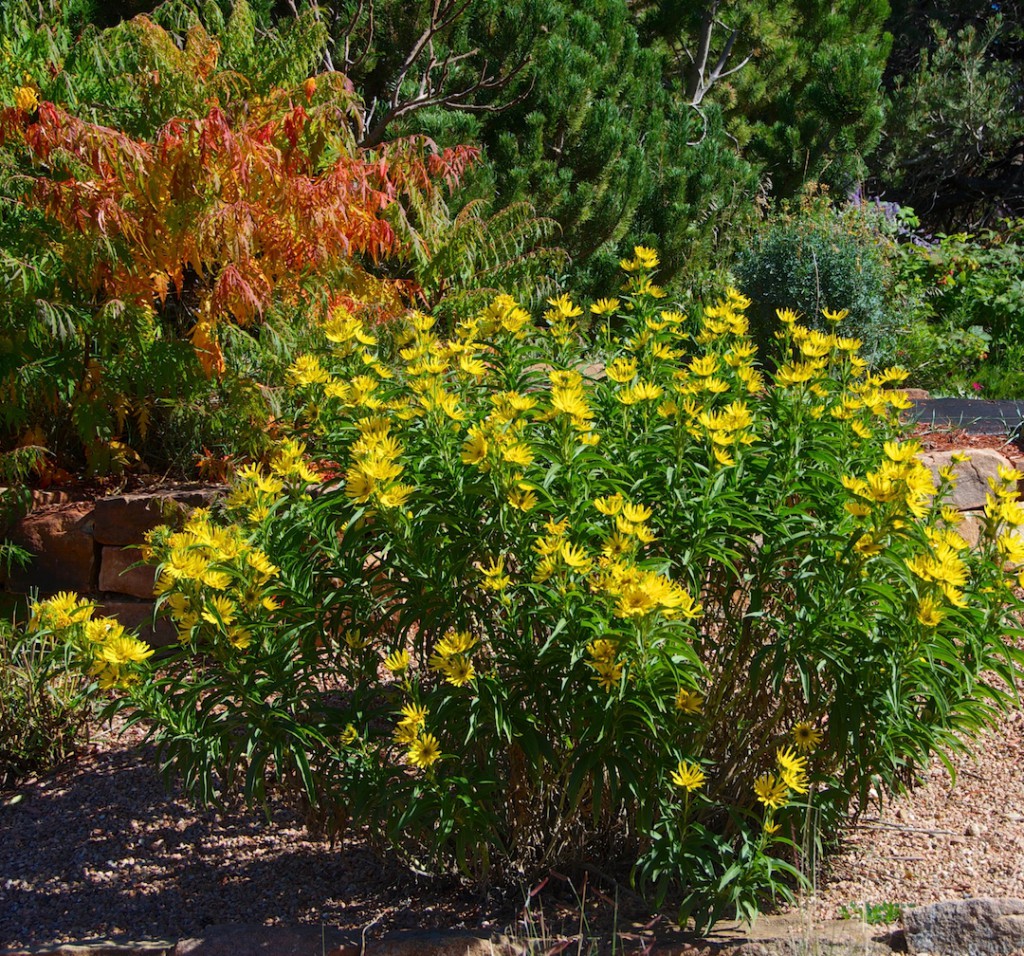
Maximillian sunflower in full bloom (Photo: Janice Tucker)
Sunflowers! Those colorful precursors that herald the glorious autumn season!
These popular flowers in the Helianthus genus charm us with their happy presence from mid-summer through autumn. The perennial Maximilian sunflower (Helianthus maximiliani) begins its above ground cycle in spring, taking us through the summer months with its luxuriant foliage. At the end of summer, just as we are about to despair that it will never bloom, our impatient vigil is finally rewarded with cheerful, yellow sunflowers scattered among green, leafy foliage.
The Maximilian sunflower is native to much of North America but is considered an introduced species in New Mexico. Plants do not recognize the boundaries defined by cartographers.. Therefore, it is entirely possible that some Maximilian sunflowers tiptoed over the mapped borders of Colorado, Texas, Utah, Oklahoma or Mexico to naturally establish themselves in sovereign New Mexico soil. But the official determination is that the Maximilian sunflower is not native to our fair state even though many New Mexico plant lovers would like to claim it. It can be invasive in some areas but so far no alarms have been raised about the Maximilian sunflower exhibiting bad manners in New Mexico.
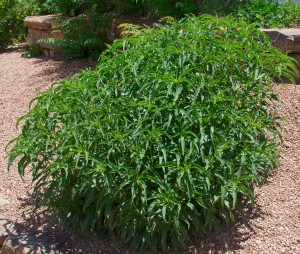 Embraced by gardeners as an ornamental, the Maximilian sunflower provides color, form and texture to a cultivated landscape. But its irrepressible wild side is evident where it grows naturally in a variety of locations such as rocky uplands, along roadsides and other disturbed areas. It seeks out moist areas in drier climates and thrives in prairies abundant with tall grasses.
Embraced by gardeners as an ornamental, the Maximilian sunflower provides color, form and texture to a cultivated landscape. But its irrepressible wild side is evident where it grows naturally in a variety of locations such as rocky uplands, along roadsides and other disturbed areas. It seeks out moist areas in drier climates and thrives in prairies abundant with tall grasses.
Varying in heights of 3 to 10 feet, the Maximilian sunflower’s industrious root system sends up new growth in the spring. Light reddish to green, hairy stems are soon covered with slender, slightly coarse foliage. Arched and folded with wavy or smooth margins, the alternately arranged, green leaves cascade down the length of the stems.
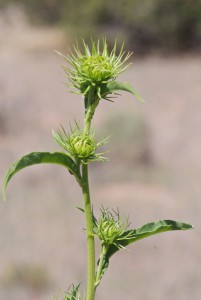
Maximilian sunflower (Helianthus maximilianii) before bloom. Photo by Janice Tucker.
Toward the end of August, plant activity kicks up a notch when flower stems with two leaves and a flower bud appear at the tip ends of the stalks and at the leaf axils. The Maximilian sunflower’s signature, spindly phyllaries (bracts) tightly encase the buds. When the time is right, the phyllaries open, revealing bright, yellow, sterile rays (petals) encircling tiny, fertile, gold-dusted flowers that eventually fill the center disk. Once the first sunflower shows its sunny face, the blooming floodgates open. Within days the entire plant is filled with artistically arranged flowers enhanced by the long, bowed, green leaves. Toward the end of September the flowers at the terminal ends of the upper stems will begin to bolt toward the sky as if paying homage to that dazzling, heavenly body, for which sunflowers are named.
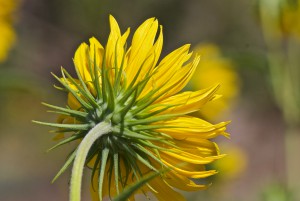
Back of Maximilian sunflower (Photo: Janice Tucker).
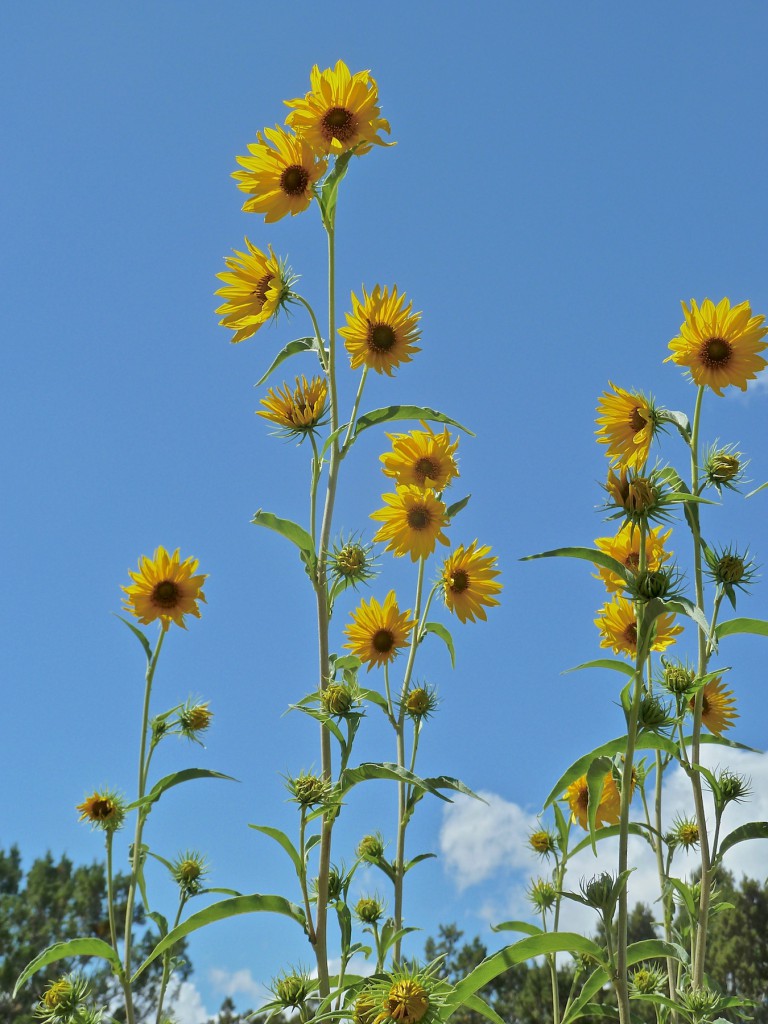
Helianthus maximilianii reaching toward the sky (Photo: Janice Tucker).
The flowers produce oblong achenes (seeds) attached to awns. These awn-ladened seeds will latch onto the fur of passing critters to aid in distribution or grab onto a gust of wind for dispersal. But the Maximilian sunflower does not deposit all its propagation strategy in one basket. Its vigorous root system works hard to send out runners in order to establish more plants in the same general area.
The Maximilian sunflower is a good fit for some home gardens as long there is plenty of elbow room to accommodate its spread of up to 4 feet. In addition, gardeners need to be aware that like many other sunflower species it secretes a mild chemical that can sometimes inhibit the growth of neighboring plants.
If the Maximilian sunflower pops up as a volunteer, and is welcome to your garden, let it stay without doing anything extra. It obviously chose the spot where it wants to live. But if intentionally planting this cheery sunflower, find a sunny home in a location where its height and spread will enhance but not overshadow other plants. It’s not too picky about soil composition but has a preference for moist clay. Root rot can be a problem if the soil does not drain well. A little extra water is okay during dry spells, but don’t overdo. The Maximilian sunflower is not a diva and needs very little maintenance. After a brief winter’s rest, the roots will send up robust new growth in spring. There are some cultivars such as the Maximilian sunflower ‘Santa Fe’ that may adapt to home gardening conditions better than one transplanted from the hinterlands. Both the species, Helianthus maximiliani, and the cultivar, Helianthus maximiliani ‘Santa Fe’, are in the Ojos y Manos Garden of the Botanical Garden at Museum Hill.
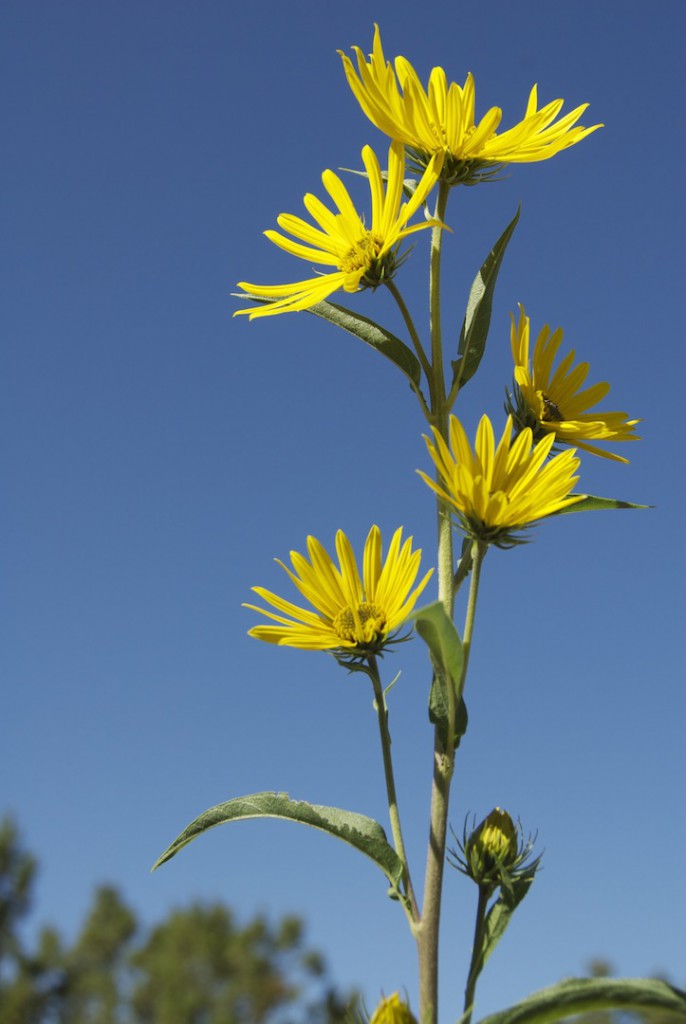
Maximilian sunflower naturally artistically arranged (Photo: Sonny Tucker).
The Maximilian sunflower’s nectar lures birds and butterflies as well as native bees and honeybees. The seeds provide a tasty treat for a variety of birds and some mammals. Deer and rabbits usually pass it by. Insects that visit are mostly beneficial instead of harmful. That earns the Maximilian sunflower a check in the positive column.
The genus of the Helianthus maximiliani is of Greek origin, combining helios (sun) and anthos (flower). But it is the species’ regal name that has royal German ties and an interesting history. Heinrich Schrader, a German botanist (1767-1836) named the species in honor of Prince Alexander Philipp Maximilian zu Wied-Neuwied (1782-1867). Prince Maximilian was a German explorer, ethnologist and naturalist who led notable expeditions to Brazil in 1815-1817 and to the Great Plains of North America in 1832. His scope of interest spanned plants, animals, geology and the culture of the native people he encountered during these journeys. On his venture to North America he was accompanied by the Swiss artist, Karl Bodmer, whose accurate watercolor paintings are enduring testimonials to their travels. The Helianthus maximiliani’s majestic presence in a garden is a living tribute to Prince Maximilian’s work.
Ralph Waldo Emerson is credited with the quote, “The earth laughs in flowers.” The Maximilian sunflower, especially when in vibrant bloom, will certainly lift the the corners of the mouth and tickle the botanical soul.
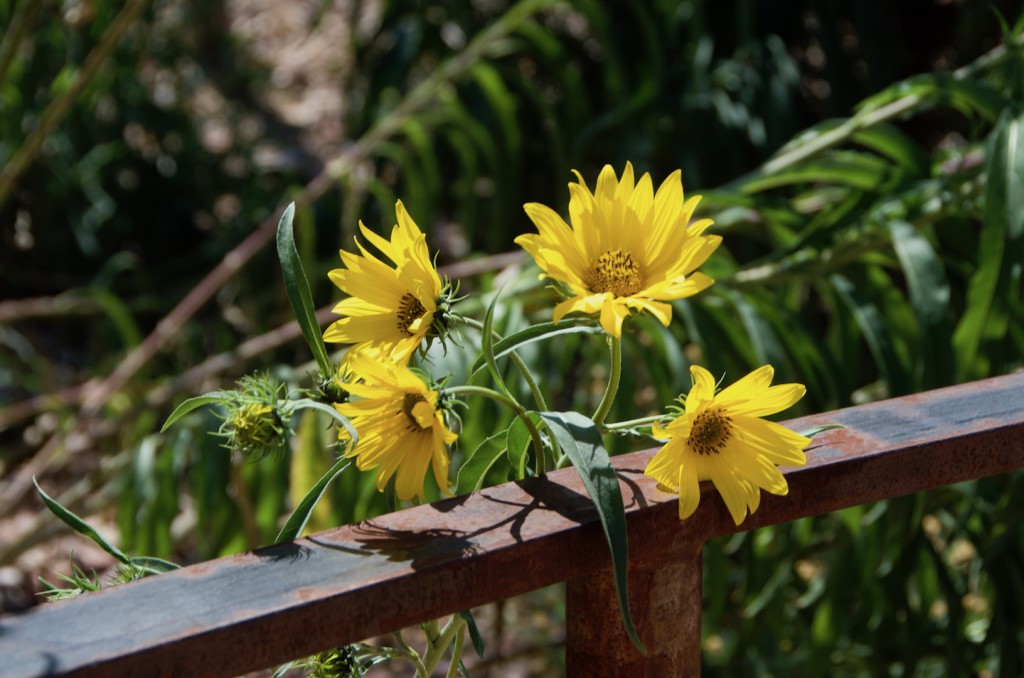
Maximilian sunflower at Ojos y Manos (Photo: Janice Tucker).
Thanks to Helen Woody and Jeanne Gozigian for proofreading this article.
Sources consulted and/or cited:
Allred, Kelly, Flora of New Mexico, and Lowery, Tim, University of New Mexico, Department of Biology – August 18, 2017 Consultation with Santa Fe Botanical Garden regarding native status of the Helianthus maximiliani.
Encyclopedia of Life website – Helianthus maximiliani -Maximilian Sunflower.
Flora of North America website – Helianthus maximiliani Schrader.
Lady Bird Johnson Wildflower Center website – Helianthus maximiliani.
Oxford American dictionary – Helianthus.
Poetry Foundation website – Hamatreya by Ralph Waldo Emerson.
University of Arkansas Cooperative Extension Service website – Plant of the Week: Helianthus maximiliani Maximilian Sunflower.
USDA Natural Resources Conservation Service website – Maximilian Sunflower Helianthus maximiliani Schrad.


